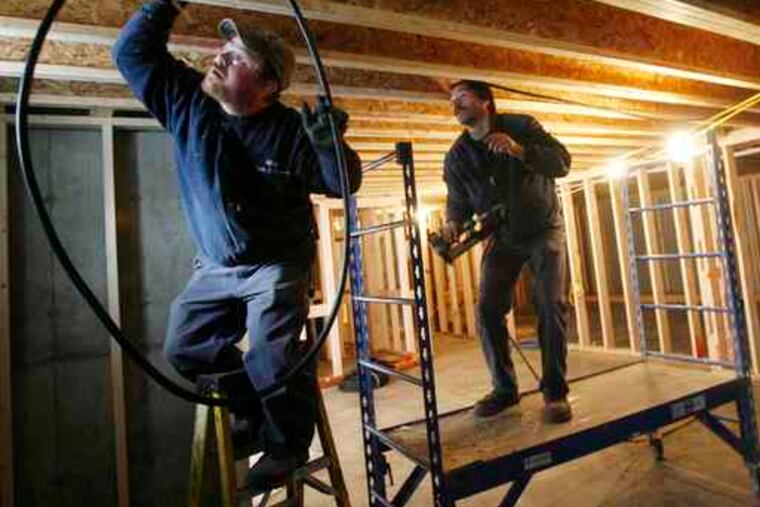Core inflation flat; Fed steady on rate
Housing construction rose in November while and a gauge of consumer prices was unchanged, the government reported yesterday in reports that supported forecasts for a gradual, sustained economic recovery that will generate little inflation.

Housing construction rose in November while and a gauge of consumer prices was unchanged, the government reported yesterday in reports that supported forecasts for a gradual, sustained economic recovery that will generate little inflation.
In one report, the Commerce Department said builders broke ground on 574,000 homes at an annual rate in November, an 8.9 percent increase from the prior month.
Perhaps even more significantly, permits for future construction increased to the highest in a year, a sign builders expect sales to rise as home buyers are lured by lower prices, tax credits, and mortgage rates near record lows. A housing recovery is key to the overall economy.
Separately, the Bureau of Labor Statistics said consumer prices excluding food and energy - called the core inflation rate - were unchanged in November for the first time in nearly a year. That compared with a median forecast for a 0.1 percent increase in a survey of economists.
The overall inflation rate in November, as measured by the Consumer Price Index, rose 0.4 percent last month from October, led by higher energy prices.
"Aside from the surge in energy prices. . . there were few signs of any inflationary pressures," said Paul Ashworth, economist at Capital Economics Ltd. Costs for energy have dropped so far in December.
The consumer price figures appeared to conflict with a BLS report Tuesday that showed November prices at the producer level - a step before reaching consumers - rose a sharp 1.8 percent.
But many economists considered that a temporary spike. In coming months, they said, companies will likely find it hard to raise prices because the job market still is weak, consumers remain cautious, and the recovery from the recession is sluggish.
Federal Reserve policymakers yesterday repeated a pledge to keep the benchmark interest rate almost at zero for an "extended period" to keep the recovery on track.
"The housing market is stabilizing at very low levels, which of course is better than plunging," said Harm Bandholz, an economist at UniCredit Research in New York. "Core inflation will continue to trend lower. The Fed does not want mortgage rates to rise right now or in the near future."
The November figure on the start of housing construction followed a 10 percent drop the prior month. The government revised October's reading down to a 527,000 annual pace from the 529,000 previously estimated.
Building permits increased to a 584,000 annual pace, the highest since November 2008, from 551,000 the prior month. Permits were forecast to rise to 570,000.
Toll Bros. Inc., the Horsham builder of luxury homes that reported a 42 percent surge in fiscal fourth-quarter orders, is anticipating a gradual recovery in the market, chief executive officer Robert Toll said in an interview last week.
"There is a pretty good reservoir of pent-up demand," Toll said. "We don't know how fast we're coming back, but we do know we're coming back."
Favorable weather may have played a role in boosting home construction last month, said Patrick Newport, an economist at IHS Global Insight Inc., of Lexington, Mass. November was the third-warmest in 115 years of recordkeeping, according to the National Climatic Data Center, giving builders an opportunity to keep working. By contrast, October was the wettest in the last century.
Compared with a year earlier, consumer prices were up 1.8 percent. Core prices rose 1.7 percent.
Energy prices rose 4.1 percent last month, reflecting more expensive fuel oil and gasoline. Energy prices, though, are already in retreat. Oil prices are down about 10 percent this month.
Food prices edged up 0.1 percent for the second straight month. Falling prices for dairy products and nonalcoholic drinks helped blunt small increases for meat, cereals and baked goods, and fruits and vegetables.